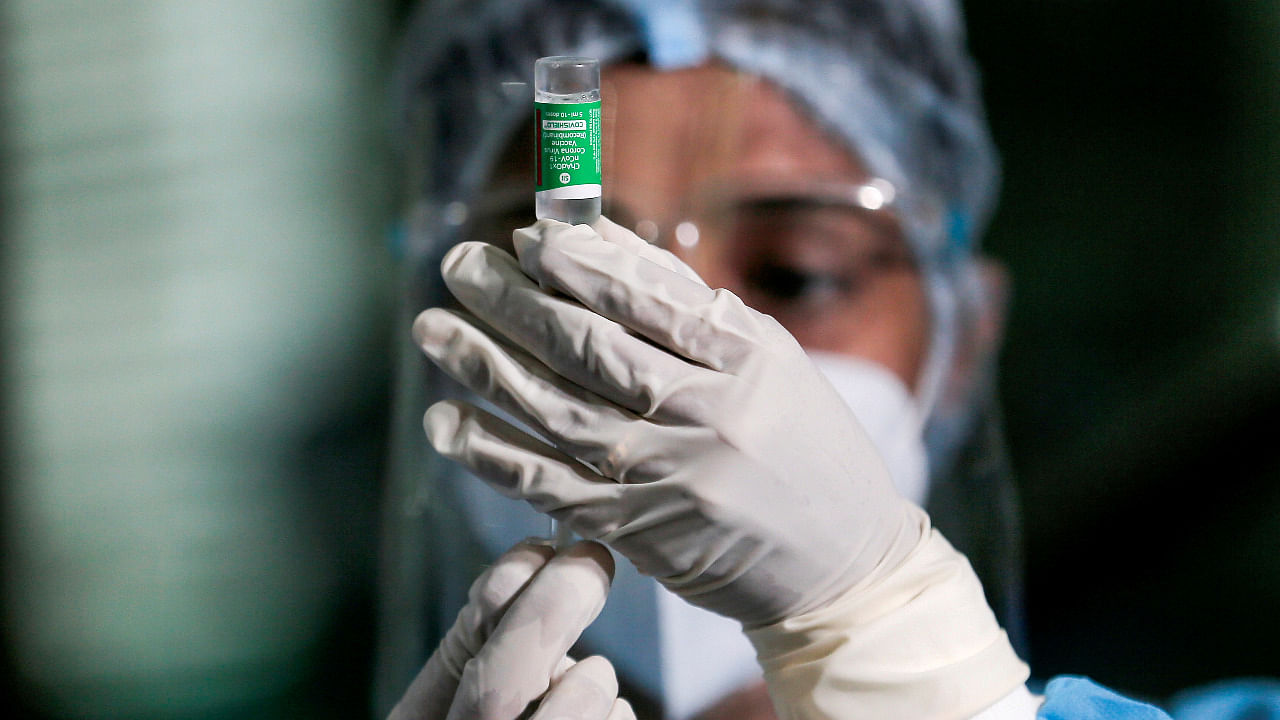
India reported that 4,529 people had died from Covid-19 on Tuesday alone. That’s the highest official daily death count for any country since the beginning of the pandemic, and the real toll is thought to be even higher. More than 25 million cases of infection have been recorded there to date.
Given the scale of the crisis, it’s imperative that the Indian government vaccinate its people and stave off future waves of infection. But this unequivocal need also spells dire consequences for other countries that rely on vaccines produced in India.
These spillover effects highlight a systemic problem in global vaccine production that extends far beyond this pandemic: The world has become too dependent on India for vaccines, and not just vaccines against this coronavirus.
According to my calculations, based on data from the Global Commission for Post-Pandemic Policy, more than 65% of all doses of the AstraZeneca vaccine produced globally by April had been manufactured in India by the Serum Institute of India, the world’s largest vaccine producer. The Serum Institute was expected to supply about 1 billion of the 2 billion doses earmarked this year for Covax, the global vaccine-sharing initiative overseen by the public-private partnership Gavi, the Vaccine Alliance.
By mid-April, India had manufactured nearly 17% of all Covid-19 vaccine doses globally: It was the world’s fourth-largest producer, after China (about 36%), the United States (about 22%) and the European Union (more than 17%), according to data from the Global Commission for Post-Pandemic Policy.
But India’s role is outsize when it comes to supplying lower-income countries. By my tally, more than 55% of the vaccines delivered to Covax through the end of April came from India.
But that was then.
India stopped exporting Covid-19 vaccines in mid-April, leaving Covax and the 92 low-income and lower-middle-income countries that depend on the program in the lurch. The shortfall is estimated to be at 190 million doses by the end of June.
Afghanistan, Bangladesh, the Democratic Republic of Congo, Ethiopia, Ghana, Kenya, Mozambique, Myanmar, Nigeria, Pakistan and Uganda were to receive the largest allocations of Indian-made Covax vaccines during the first half of 2021. Who knows now when vaccines will come to those countries.
The African Union has been able to negotiate for its member countries alternative arrangements with Johnson & Johnson and for the Sputnik V vaccine from Russia, but those vaccines aren’t expected to be delivered until the third quarter of 2021.
India’s production capacity — approximately 80 million doses in April, for Serum Institute and Bharat Biotech combined — cannot meet the needs of India’s vaccination program, much less the country’s global commitments. Just 3% of India’s population of 1.36 billion has been fully vaccinated. And yet all adults are now eligible for shots.
The United States has announced that it would send a total of 80 million Covid-19 vaccine doses to countries facing surges in cases. Presumably some will go to India — when they might have gone to other countries that also desperately need them.
Some state governments in India have floated purchase tenders to buy vaccines internationally. In just a few weeks, India went from being a major exporter of Covid-19 vaccines to becoming a net importer.
The risks of such a turn were known, or should have been; it has been obvious for years. For example, since 2010, vaccine manufacturers in India — the Serum Institute, Biological E. and Panacea Biotech — have manufactured and exported, at very affordable prices, up to 70% of the pentavalent vaccines against diphtheria, tetanus, pertussis, Hib and hepatitis B that are distributed to poor countries through Gavi or UNICEF, the U.N. agency for children.
Why has the production of vaccines become so heavily concentrated in India? Two reasons, historically: the country’s technical capacity and comparatively low overhead manufacturing costs.
But those advantages have now been overtaken by starker realities. The world’s vaccine supply chain needs to be rethought.
First, we need to develop a way to map global vaccine-manufacturing capacity rigorously, routinely and transparently.
Doing this is not as straightforward as it may seem. It requires understanding the type of equipment available at a manufacturing site, adapting it to the steps required to produce a specific vaccine, calibrating it for dosing and expected yield. Some of that information might be commercially sensitive, and vaccine manufacturers may be reluctant to share it publicly.
This obstacle can be overcome, however. Safeguards can be put in place to protect proprietary information, for example by sharing only aggregate data about manufacturing capacity, without revealing the specific configuration of the equipment or sources of supplies.
Second, production sites must be multiplied and diversified.
As the current moment illustrates, the world is vulnerable for relying so much on vaccines manufactured in India because India itself may have a great need for the vaccines it produces. To minimize the risk that domestic demand will scuttle exports and global distribution, vaccine production hubs should be set up in countries with small populations.
Prospective hub countries will also need to be well-connected, to ensure both the arrival of raw materials and the speedy export of vaccines.
They should have reliable infrastructure and a competent work force skilled in manufacturing biologics (complex proteins made from living cells). Based on these criteria, Singapore, Luxembourg, Belgium, Panama, Senegal and Rwanda are candidates worth exploring.
Building up vaccine-manufacturing capacity in new locations, and creating a more decentralized and more transparent network worldwide, will be expensive, of course. And that, in turn, is likely to raise the price of vaccines.
But the cost of developing resilience is a small burden to bear compared to the losses that India and other countries short of vaccines are suffering today.
(The author is a senior fellow at the Center for Global Development and an affiliate professor of technology and operations management at INSEAD)